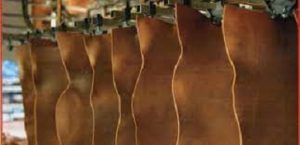Leather is a versatile and widely used material derived from the hide or skin of animals, most commonly cattle. It is valued for its durability, flexibility, and aesthetic appeal. Here are some professional insights about leather:
1. Types of Leather:
There are various types of leather, each with its own characteristics and uses. Some common types include:
– Full-Grain Leather: Considered the highest quality, full-grain leather retains the complete grain layer with its natural markings and texture. It is durable, develops a patina over time, and is often used in high-end products.
– Top-Grain Leather: This type of leather is derived from the top layer of the hide and is slightly corrected to remove imperfections. It is more uniform in appearance and widely used in furniture, footwear, and accessories.
– Split Leather: Split leather is derived from the lower layers of the hide and is generally less durable and thinner than full-grain or top-grain leather. It is commonly used in suede production.

2. Leather Production Process:
The production of leather involves several stages, including:
– Preparation: The hide/skin is cleaned, soaked, and treated to remove hair, flesh, and any impurities.
– Tanning: The tanning process involves treating the hide/skin with chemicals or natural substances to prevent decomposition and make it more durable. Common tanning methods include chrome tanning, vegetable tanning, and synthetic tanning.
– Finishing: After tanning, the leather undergoes various treatments such as dyeing, buffing, and coating to enhance its appearance, color, and texture.
3. Leather Applications:
Leather is used in a wide range of industries and products, including:
– Fashion and Accessories: Leather is commonly used in the production of garments, footwear, handbags, belts, and wallets.
– Furniture: Leather upholstery is popular in the furniture industry due to its luxurious look, durability, and comfort.
– Automotive: Leather is frequently used in car interiors, including seats, steering wheels, and trim, adding a touch of elegance and luxury.
– Upholstery and Interior Design: Leather is employed in various interior design applications, such as wall coverings, rugs, and decorative accents.
4. Care and Maintenance: Proper care is essential to maintain the quality and longevity of leather products. Regular cleaning, conditioning, and protection from moisture and direct sunlight can help preserve the leather’s appearance and prevent drying or cracking.
5. Sustainability and Ethical Concerns: The leather industry has faced scrutiny regarding the environmental impact of leather production, animal welfare, and the use of chemicals. Sustainable practices, such as responsible sourcing, eco-friendly tanning methods, and recycling, are gaining importance in the industry.
These are just some key points about leather. The leather industry is vast and continually evolving, with ongoing research and advancements in production techniques, sustainability practices, and innovative applications.

